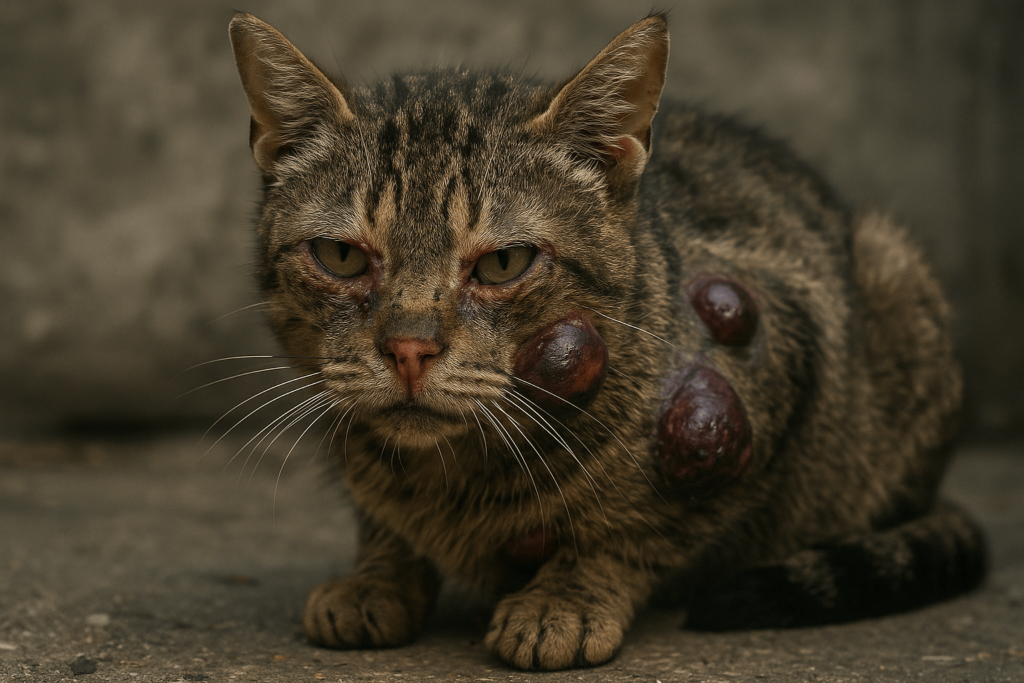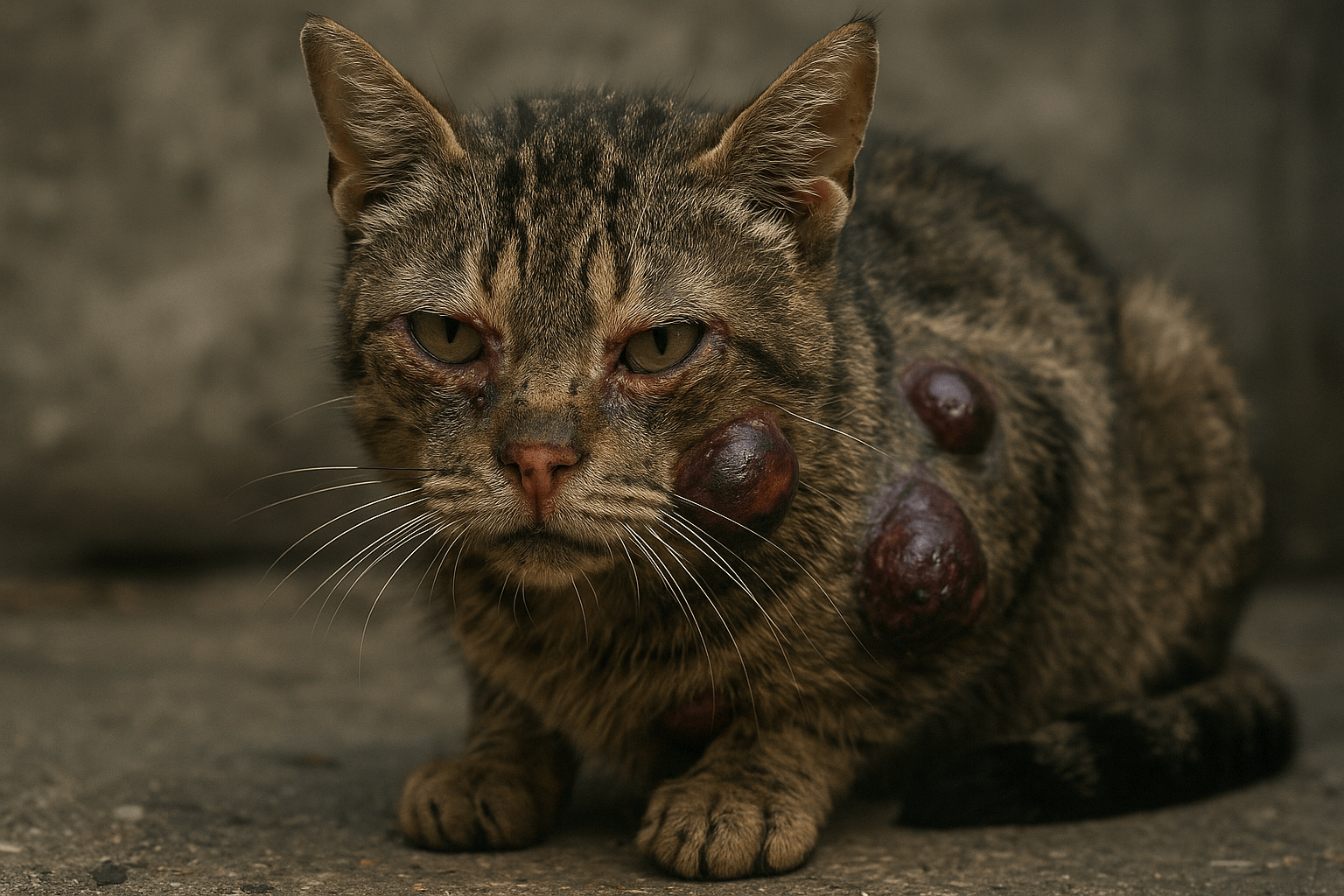Cat with Bubonic Plague: What You Need to Know
A cat with bubonic plague is not just a medical anomaly — it’s a rare but serious public health signal. While the bubonic plague is often associated with medieval history, it still exists today, and domestic cats can become infected. When they do, it’s not only a crisis for the animal, but a potential risk to human households. Understanding how cats contract this disease, recognizing the symptoms, and knowing how to respond can save lives — both feline and human. This guide explores the science, risks, and practical steps every cat owner should know.
Why Cats Are Vulnerable to Bubonic Plague
Cats are not immune to the ancient bacterium Yersinia pestis, which causes bubonic plague. In fact, they are among the most susceptible domestic animals. Their behavior, hunting instincts, and proximity to infected wildlife make them accidental carriers.
Cats hunt rodents — the primary carriers of infected fleas — putting them directly in contact with the source of transmission.
Fleas thrive on cats — especially in warm climates or rural areas where plague is endemic, like the southwestern U.S.
Cats show rapid symptom progression — unlike dogs, which rarely develop clinical signs, cats often become severely ill within days.
They can transmit the disease to humans — through bites, scratches, or close contact with respiratory secretions.
Plague is underreported in pets — many cases go unnoticed or are misdiagnosed as common infections.
This isn’t a distant threat. In the U.S., cases of plague in cats occur annually, especially in Colorado, New Mexico, Arizona, and California. Ignoring the risk is dangerous — awareness is your first line of defense.

How a Cat Contracts Bubonic Plague
Understanding the transmission pathway is key to prevention. The bubonic plague doesn’t appear out of nowhere — it follows a precise, biological chain.
Infected fleas bite rodents — such as prairie dogs, rats, or squirrels — and become carriers of Yersinia pestis.
Cats hunt and kill these rodents — ingesting infected tissue or being bitten by fleas jumping from the dead prey.
Fleas then transfer to the cat — feeding on its blood and spreading the bacteria into its bloodstream.
Bacteria multiply in lymph nodes — causing the characteristic swollen, painful lymph nodes known as “buboes.”
Human exposure follows — through direct contact with the cat’s saliva, blood, or respiratory droplets during coughing or sneezing.
Even indoor cats aren’t completely safe. Fleas can hitch a ride on shoes, clothing, or other pets. Once Yersinia pestis enters a household, it spreads quickly — making early detection critical.
Check this guide 👉Cat Coronavirus Treatment: Best 7 Expert Tips!
Check this guide 👉Can Cats Get Norovirus from Humans? Best 7 Health Tips!
Check this guide 👉Cat Vaccine Side Effects: Best 7 Expert Tips!
| Risk Factors for Cats | Human Exposure Risks |
|---|---|
| Living in plague-endemic regions (Southwest U.S.) | Handling a sick cat without gloves |
| Outdoor access or hunting behavior | Being bitten or scratched by an infected cat |
| Exposure to dead rodents or wildlife | Inhaling respiratory droplets from a coughing cat |
| Poor flea control or lack of preventive medication | Touching contaminated bedding or litter |
| Close proximity to feral cat colonies | Delayed veterinary care leading to worsening infection |
Symptoms of Bubonic Plague in Cats
Recognizing the signs early can mean the difference between life and death — for your cat and your family. The symptoms often mimic other illnesses, which is why vigilance is essential.
Swollen, painful lymph nodes — especially under the jaw or in the armpits; these are the hallmark “buboes” of bubonic plague.
Fever above 103°F (39.4°C) — persistent and unresponsive to typical pet fever remedies.
Lethargy and refusal to eat — sudden behavioral change, often the first sign owners notice.
Difficulty breathing or coughing — may indicate progression to pneumonic plague, which is airborne and highly contagious.
Vomiting, diarrhea, or dehydration — signs of systemic illness and organ stress.
Cats may also appear disoriented, have rapid heart rate, or develop dark, necrotic lesions around the mouth or paws. If your cat shows even one of these symptoms — especially after exposure to wildlife or fleas — seek emergency veterinary care immediately. Do not wait.
Diagnosis and Treatment of Plague in Cats
A cat with bubonic plague requires urgent, specialized care. Diagnosis isn’t always straightforward, but modern veterinary medicine has effective tools.
Blood and lymph node tests — veterinarians culture samples to detect Yersinia pestis DNA or bacteria.
PCR testing — rapid genetic identification confirms plague within hours, enabling faster treatment.
Antibiotic therapy — doxycycline, enrofloxacin, or streptomycin are commonly used and highly effective if started early.
Isolation protocols — infected cats must be quarantined to prevent transmission to people and other animals.
Supportive care — IV fluids, oxygen, and pain management are often needed to stabilize the cat.
Survival rates are high — up to 90% — if treatment begins within 24–48 hours of symptom onset. Delayed treatment, however, increases mortality and the risk of pneumonic plague, which can be fatal in humans.
Preventing Plague in Your Cat
Prevention is far easier — and safer — than treatment. Protecting your cat from plague is a matter of smart, consistent habits.
Use veterinarian-approved flea control — monthly topical or oral preventatives are non-negotiable, even for indoor cats.
Keep cats indoors — eliminates exposure to infected rodents and fleas, reducing risk by over 95%.
Avoid wildlife contact — don’t let your cat bring home dead animals; remove rodent attractants like bird feeders or open trash.
Clean litter boxes daily — reduces flea egg buildup and minimizes exposure to contaminated waste.
Stay informed about local outbreaks — check CDC or state health department alerts if you live in a high-risk area.
Simple steps like these are your most powerful defense. Plague is preventable — not inevitable.
What to Do If Your Cat Is Diagnosed with Plague
A diagnosis of plague is alarming — but panic won’t help. Follow these steps precisely to protect your family and your pet.
Wear gloves and a mask — when handling your cat, its bedding, or waste.
Isolate your cat in a separate room — away from children, elderly family members, or immunocompromised individuals.
Notify your local health department — plague is a reportable disease; authorities may provide guidance or disinfection support.
Follow all medication instructions — complete the full antibiotic course, even if your cat seems to recover.
Disinfect surfaces with bleach solution — use 1:10 dilution on floors, bowls, and bedding to kill lingering bacteria.
Do not attempt home remedies. Plague is a bacterial emergency — only professional veterinary and public health protocols are effective.
Can Humans Catch Plague from a Cat?
Yes — and this is why a cat with bubonic plague is not just a pet health issue, but a human health crisis.
Direct contact with bodily fluids — saliva, blood, or pus from buboes can transmit the bacteria.
Bites or scratches — even minor wounds can introduce Yersinia pestis into the bloodstream.
Inhalation of respiratory droplets — if your cat develops pneumonic plague, coughing can spread the disease through the air.
Contaminated bedding or litter — fleas or bacteria may linger on surfaces for days.
Delayed medical response — untreated cases in cats often lead to human infection within 1–3 days.
Human plague cases from cats are rare — but they do occur. Symptoms in people include fever, chills, swollen lymph nodes, and weakness. If you’ve been exposed and develop these signs, seek emergency care immediately. Plague is treatable with antibiotics — but only if caught early.
FAQ: Cat with Bubonic Plague
Can my cat survive bubonic plague?
Yes — with prompt veterinary care, survival rates exceed 90%. Early treatment is critical.
Is plague contagious between cats?
Direct transmission between cats is rare, but fleas can spread it between animals in the same environment.
Should I euthanize my cat if it has plague?
No. Plague is treatable. Euthanasia is unnecessary unless the cat is in extreme, untreatable pain.
How long should I isolate my cat after diagnosis?
Until your vet confirms the infection is cleared — usually 7–14 days of antibiotics and negative retesting.
Can I get plague from petting my cat?
Yes — if the cat is actively shedding bacteria through saliva, blood, or respiratory droplets. Wear gloves and wash hands immediately.
Final Thoughts: Protect Your Cat, Protect Your Home
A cat with bubonic plague is a rare event — but not a remote one. In a world where ancient diseases still walk among us, vigilance is not paranoia — it’s responsibility. Your cat’s health is intertwined with your own. A single flea, a single dead rodent, a single missed dose of preventive medication — these small things can have life-altering consequences.
By keeping your cat indoors, using vet-approved flea control, and staying alert to sudden changes in behavior, you become the most effective shield against this deadly disease. You are not just a pet owner — you are a guardian of public health.
Canned Pumpkin for Cat Diarrhea: Best 7 Expert Tips! Natural remedy to firm stools, soothe upset bellies, and support gut health safely.
Can a Cat Give You Scabies? Best 7 Expert Tips! Discover the truth about feline mites, human skin risks, and how to protect yourself—without panic.
Cat Flea vs Human Flea: Best 7 Expert Tips! Discover the truth about bites, species, and how to eliminate infestations for good.
Weird Cat Behaviors: Best 7 Expert Tips! Discover why cats do strange things—and how to understand, not punish, their instincts for a happier home.





